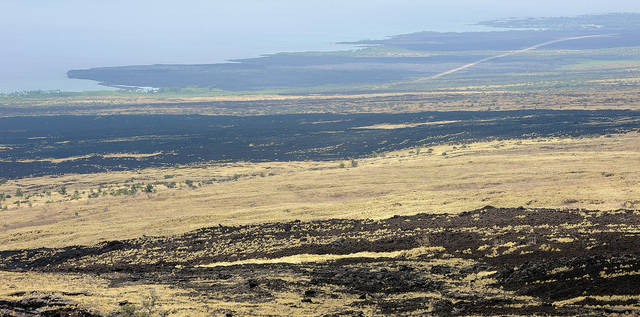“Dozens of volunteers got down and dirty to plant roughly 750 trees on Oahu’s west side.” Credit: DLNR.
Important work being done by our partners from the Waianae Mountains Watershed Partnership and DLNR to reforest Waianae Kai State Forest Reserve, which will create a more resilient landscape and reduce the wildfire risk in the area. If you want to get involved with the planting events, you’re asked to contact coordinator Yumi Miyata at (808) 227-9545, or wmwpcoordinator@gmail.com.
From the Source:
“The Enterprise Urban Tree Initiative brings our employees together to volunteer in communities like Waianae that have been devastated by natural disasters, such as wildfires,” said Chris Sbarbaro, Enterprise Hawaii Vice President of External Affairs. “We support the Arbor Day Foundation and its partners in their efforts to build strong communities from the ground up and create a sustainable and inclusive future for all.”
The need to restore Oahu’s west side comes as a dry spell started to hit Nanakuli, and is likely to move toward Waianae during the normally hot and dry summer months.
“Unfortunately, wildfires have become more frequent in Waianae. The cycle of infrequent, heavy rain followed by dry, hot and windy weather creates the perfect conditions for fast-moving, intense fire. A recent fire in August 2018 burned more than 1,500 acres of the forest reserve, threatening native forests important for water recharge,” said Yumi Miyata, Waiʻanae Mountains Watershed Partnership Coordinator and Chair of Hawaii Association of Watershed Partnerships.





















